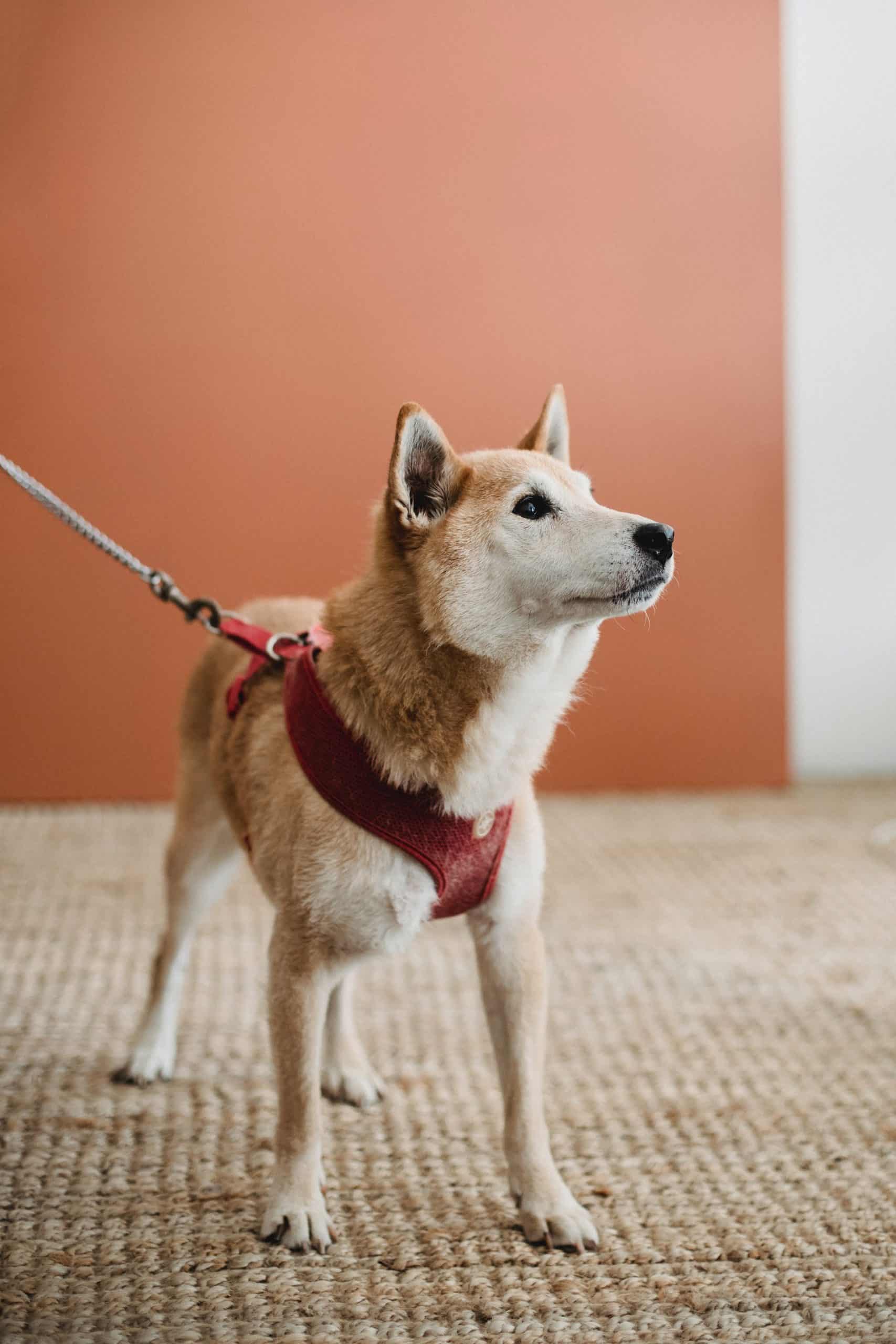How to choose the right harness for pets with respiratory issues?

Selecting the right harness for your pet can be a journey filled with countless considerations. If your beloved four-legged friend suffers from respiratory issues, the task becomes even more daunting. This article guides you through the process of selecting the best harness for pets with respiratory problems. We’ll dive into the importance of the right fit, the benefits of frontline clip harnesses, and the role of comfort and size in the selection process. It’s not just about walking in style, it’s about keeping your pet happy, comfortable and healthy.
Importance of the Proper Fit
Choosing a harness for your pet is not as simple as picking the most fashionable design on the shelf. When it comes to pets with respiratory issues, the fit of the harness can greatly impact their comfort and overall health.
A lire également : What’s the best way to teach a puppy not to cry at night?
A harness that is too tight can exacerbate your pet’s breathing difficulty, while one that is too loose may not provide the necessary control and safety. It is therefore crucial to find a harness that is just the right size for your pet.
To ensure the right fit, you should be able to slide two fingers comfortably under the harness at any point. This will prevent the harness from applying too much pressure on your pet’s chest and neck, which could potentially lead to choking or discomfort.
A voir aussi : How to safely use heating pads for pets during cold weather?
The neck opening of the harness should also be carefully considered. A harness with an opening that is too small may restrict your pet’s airway, making breathing difficult. On the other hand, an opening that is too large may not provide enough support and control, especially for dogs that pull.
Benefits of Front Clip Harnesses
While there are many different types of harnesses available, front clip harnesses are often the best choice for pets with respiratory issues. These harnesses have a leash attachment point at the chest, making them ideal for training and controlling pets that have a tendency to pull.
In addition to providing better control, front clip harnesses also put less pressure on your pet’s neck. Unlike traditional collars or back clip harnesses, they distribute the force across the chest when your pet pulls on the leash, reducing the risk of strain on the neck and the respiratory system.
Another advantage of front clip harnesses is that they discourage pulling. Since the leash attachment is at the front, it will cause your pet to turn towards you whenever they try to pull ahead. This makes walks more enjoyable for both you and your pet, while also reducing the strain on their respiratory system.
Factoring in Comfort and Size
Comfort is a key factor to consider when choosing a harness for your pet, especially if they have respiratory issues. Look for harnesses with padded straps or chest plates that can provide extra comfort and cushioning.
Materials also play a role in comfort. Harnesses made from soft, breathable materials can help prevent irritation and overheating, which can be particularly beneficial for pets with respiratory problems.
The size of the harness is another important aspect. It needs to fit your pet well, but also allow for mobility and growth. Most pet stores provide size charts that you can use as a guide. When in doubt, it’s always better to choose a slightly larger size and adjust it for a snug fit.
Training Your Pet to Use the New Harness
After you’ve chosen the perfect harness, the next step is to introduce it to your pet and train them to use it. Start by allowing your pet to sniff and explore the new harness. Praise and reward them for showing interest in it to create positive associations.
Next, gently put the harness on your pet and ensure it’s properly adjusted. Reward them with treats and praise for staying calm during this process. Take off the harness after a few minutes and gradually increase the wearing time over several days.
In the initial stages, practice walking with the new harness indoors where there are fewer distractions. Once your pet seems comfortable with the harness, gradually introduce outdoor walks.
Choosing the right harness for pets with respiratory issues may require some trial and error, but with patience and careful consideration, you can ensure a comfortable and healthy walking experience for your beloved pet. It’s not just about the style or the brand, it’s about the well-being of your furry friend.
Harness Styles for Dogs with Respiratory Issues
Selecting the right harness style for your pet with respiratory issues is a task that requires careful consideration. There is an array of dog harnesses available, each with different designs, features, and benefits. But not all types are suitable for dogs with breathing difficulties.
An ideal choice for such pets is the front-clip harness, as mentioned earlier. It not only helps in controlling the dog’s pulling behavior but also minimizes the pressure on its respiratory system. With the leash attachment at the chest, the force exerted is evenly distributed, reducing the strain on the neck and chest.
On the other hand, step-in harnesses can also be beneficial. These types of dog harnesses are easy to put on and take off. The dog steps into the harness, and it clips around the back. It removes pressure from the neck, making it a suitable option for dogs with respiratory issues.
A vest harness, featuring a wider chest coverage, can also be an excellent option. It offers more comfort and less chance of chafing or rubbing. It also distributes the pressure more evenly across the dog’s body, reducing strain on their respiratory system.
However, traditional collar harnesses should be avoided for dogs with respiratory problems. These types of dog harnesses put pressure directly on the throat and neck area, which can aggravate breathing difficulties.
In essence, when choosing the harness style, prioritize the one that offers the utmost comfort, reduces pressure on the neck and chest area, and facilitates easy breathing.
Conclusion: Ensuring Comfort and Health with the Right Harness
Choosing the right harness for dogs with respiratory issues goes beyond the aesthetic appeal or brand popularity. It is about their health, comfort, and overall well-being. The best dog harness should be the one that makes walks enjoyable for both you and your pet, without causing them any discomfort or unnecessary strain on their respiratory system.
Consider harnesses that distribute pressure evenly across the dog’s body, such as front-clip or step-in harnesses. Avoid collar harnesses that exert pressure on the neck and could exacerbate your pet’s breathing difficulties.
Ensure the harness you choose is of the right size and provides a proper fit. It should not be too tight to restrict breathing or too loose to compromise safety. Always remember the two-finger rule when checking for the correct fit.
With time, patience, and careful consideration, you can find the perfect harness that caters to your pet’s specific needs. After all, as pet parents, our primary responsibility is to keep our furry friends happy, healthy, and comfortable. Remember, choosing the right dog harness is an integral part of fulfilling this responsibility.
